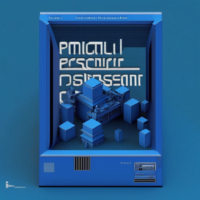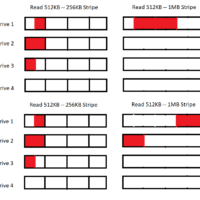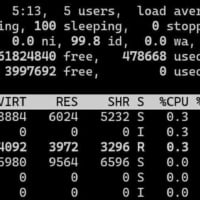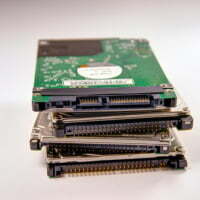CentOS
21 Mar 2023
MDADM Status Notifications: How to configure mdadm email alerts for software raid drive failures.

When managing a dedicated server, one crucial aspect to keep an eye on is the health of your RAID (Redundant Array of Independent Disks) system. RAID systems are like the unsung heroes of the server world, working behind the scenes to keep your data safe and accessible. Just as you’d want to know if your
28 Dec 2022
Need a CentOS Replacement? 5 Best CentOS Alternatives in 2023

Are you looking for a CentOS alternative in 2023? If so, you’re in good company. Many people have been after CentOS alternatives in the last few years. This is largely due to changes made by RedHat for licensing and ongoing maintenance for CentOS. For the unfamiliar, CentOS is a Linux distribution built on the Red
20 Dec 2022
Why does “df” show 100% used disk space after deleting files in linux?

Does this sound familiar? Your Linux file system is full, so you delete a large number of big files. However, when you check disk usage with df, the disk still shows up as being completely full. If this has happened to you, you’re not alone. Most systems administrators have experienced this at least once. Understanding
13 Dec 2022
Copy Files and Directories in Linux with SSH using SCP, CP, and Rsync

As a server admin, even simple tasks can benefit from a fresh perspective. To that end, today’s article talks about multiple ways you can copy an entire directory and its files in linux. To do so, we’ll be exploring three commands: cp, scp, and rsync. cp You can copy files and folders within the same
11 Dec 2022
Restart your Linux Server — Commands to reboot via SSH

As a sysadmin, one of the things you’ll need to do sooner than later is reboot a server via SSH. Even though it’s easy to do once you figure out how, it’s importance makes it worth learning about. This operation can be essential for maintaining your server’s performance and reliability, assisting you in recovering from
04 Feb 2021
Optimal RAID Stripe Size and filesystem Readahead for RAID-10?

What RAID stripe size is ideal for an array of hard drives? What are the default settings for both raid stripe size and filesystem readahead? Are those defaults acceptable? How do these settings impact the performance of my server? In this post, we’ll go into detail as to what settings are ideal for a server
25 Jan 2021
IOWAIT in Linux — is iowait too high?

High IOWAIT can be a real problem in linux, making your server grind to a halt. The question is, how high is too high? When should I be concerned? Firstly, we’ll talk about what IOWAIT means, discuss related statistics and how to interpret them, and finally how to decide if IOWAIT is causing a problem.
21 Feb 2020
What is Apache Keepalive Timeout? How to optimize this critical setting.

If you’ve struggled to fix web server slowdowns or crashes, you may have come across a setting for Apache called “Keep-Alive”. This is one of the most powerful — and frequently misused — features of apache. In this article, we’ll explain: What is Apache Keepalive / Keepalive Timeout? What configuration is optimal for best server
27 Apr 2015
Adding AHCI support to CentOS after it was already installed in IDE mode

Sometimes when you’re using a server, you’ll notice that the disk i/o is slower than it ought to be, or is using a lot more cpu than it should be during disk i/o. In some cases, this would be because the BIOS is configured to use your sata drives in legacy IDE mode instead of
21 Apr 2015
Setting up Software RAID / MDADM status alert Emails for failed drives in Centos, Ubuntu, and Debian

Issues regarding software and hardware raid are no stranger to the IOFlood blog, with articles discussing the relative merits of each, articles discussing why raid is important (and so are backups), and so on. But RAID only provides protection against failed drives if you realize a drive has failed and replace it. Often times, a
- 1
- 2